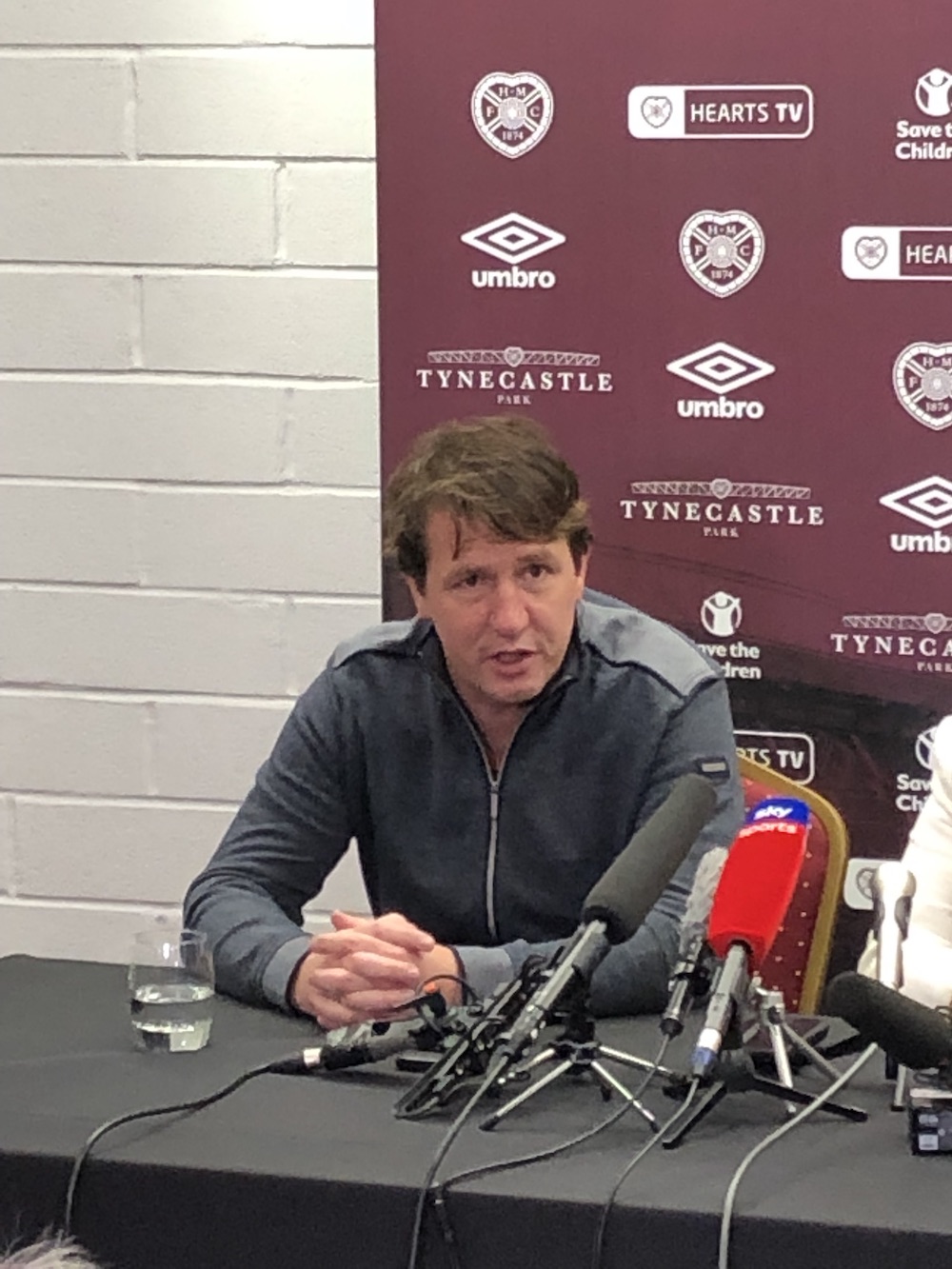DANIEL STENDEL has confessed he has discovered ‘so many problems’ since arriving as Hearts manager that he is willing to try anything in a bid to find a solution.
The German has sought to explain his use of goggles and rope at the club’s Riccarton training base after reports emerged detailing the offbeat training methods in the build-up to Saturday’s Scottish Cup victory over Rangers.
Stendel has detailed his concerns over a disconnect between players and areas of his team, leading to the use of rope – a practice famously used by George Graham to tie together his back four at Arsenal during the late 1980s and early ‘90s – to ensure units move as one.
The ski goggles were to help improve players’ peripheral vision.
The Tynecastle head coach is adamant the novel approaches, which he has not utilised before, are not revolutionary, but he admits he has been open to all suggestions in the search for a way out of his team’s current predicament at the bottom of the Premiership.
“Honestly, I hadn’t done it before,” he said when asked about the use of rope. “In the end, it was a result of our analysis, what we had seen in games. We needed more discipline, more trust in the behaviour of team-mates when someone does things.
“So, it was one idea. The future will show whether it was the right idea or not – one game is not enough.
“Everything we do, if we want to press high or defend deep, it’s important that we do it at the same time – and together. That means not only the back four. That means all players on the pitch.
IDEAS
“It was more difficult than I expected to get this. That’s the reason why we decided to break it down – and come up with some ideas for training. This was one idea.
“But, in the end, it’s not the secret that changed everything instantly. It was useful for the last time. It’s not an idea for every time.”
When asked about the use of ski masks, he cited Sunday night’s ‘El Classico’ between Real Madrid and Barcelona to highlight his side’s shortcomings.
“That’s also not such a special idea,” he reflected as he prepared for Tuesday night’s Edinburgh derby against Hibernian. “But there aren’t many opportunities to train that.
“We just had the feeling that the players were watching the ball too much, that they didn’t look enough at the spaces, at their team-mates – and the opposition players, especially the striker.
“It’s a big, big part of football for the best players in the world. I watched Real Madrid against Barcelona and, every second, the players were looking at the space around them, looking at what could be the next ball, what the next situation could be.
NEW SITUATION
“If you have that, you don’t need a fast player, you just need a player who is quick in the head.
“So that training was to help that side of the game for everybody.
“I have some experience from the past and what I also like from my coaching staff and new guys is to learn from every new situation.
“For me, this is a new situation, to have so many problems in the first weeks. The problem was not only when I came in but from before. You expected some things but to need so much time wasn’t what I expected.
“What we’ve talked about and done in the last few weeks or days, it’s not special or new, it’s not for Scottish football, but we need to find the right way to improve our game.
“I can say it’s one of the biggest challenges for me, I can say I’ve learned the most in the last couple of weeks.”


